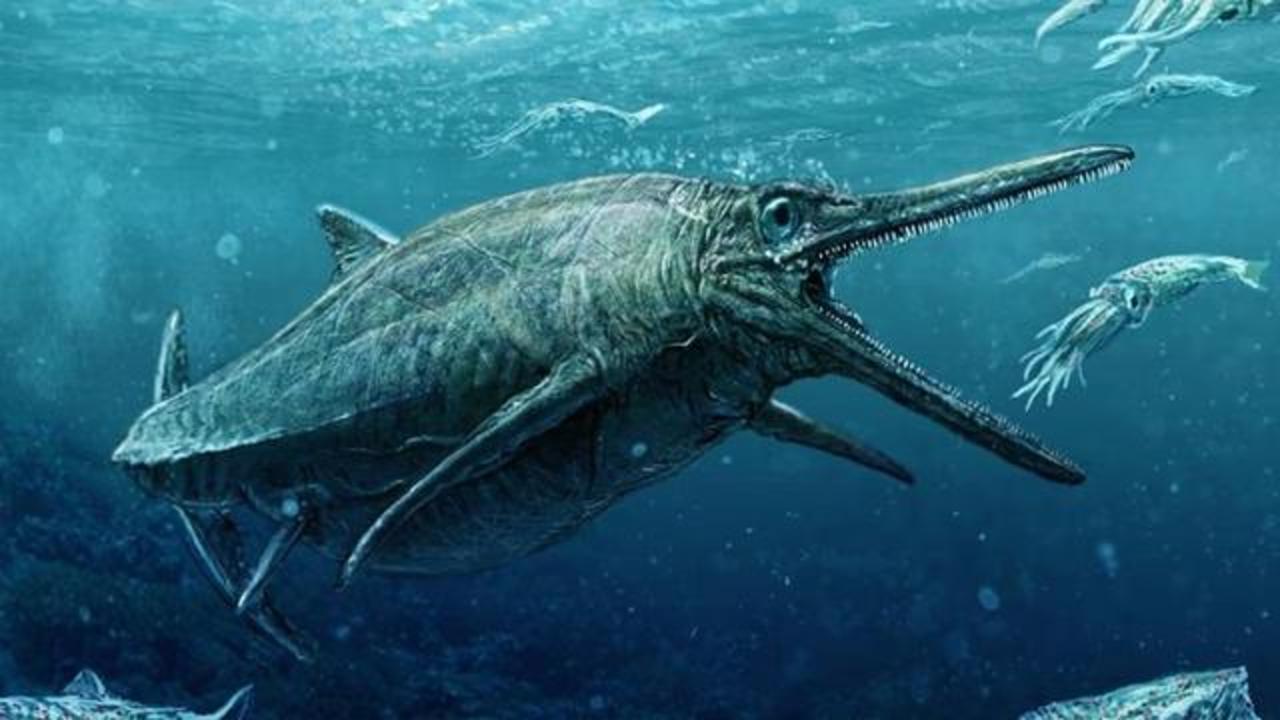Forget Loch Ness — Storr Lochs Monster Ruled Ancient Scotland

Move over, Nessie! There's a new ancient sea monster in town: the Storr Lochs Monster, a fierce, dolphin-like predator that lived 170 million years ago, during the age of dinosaurs.
Found on a beach in 1966 near the SSE Storr Lochs Power Station by the facility's manager, Norrie Gillies, the fossil is the most complete skeleton of a Jurassic-era, sea-living reptile that has ever been found in Scotland.
The ancient reptile, which belongs to an extinct family of marine reptiles known as ichthyosaurs, measured around 13 feet (4 meters) in length. It had a long, pointed head filled with hundreds of cone-shaped teeth. According to researchers, ichthyosaurs thrived in prehistoric seas, feeding on fish and squid. [In Images: Graveyard of Ichthyosaur Fossils Found in Chile]
"Ichthyosaurs like the Storr Lochs Monster ruled the waves, while dinosaurs thundered across the land," Steve Brusatte, a paleontologist at the University of Edinburgh, said in a statement. "Their bones are exceptionally rare in Scotland, which makes this specimen one of the crown jewels of Scottish fossils."
A fossilized skeleton of the Storr Lochs Monster was discovered 50 years ago, but until recently, it was sitting in the National Museums Scotland's storage facility. Thanks to a new research partnership, the fossil has been extracted from the rock that encased the skeleton for millions of years, so that it can now be studied.
"It's all thanks to the keen eye of an amateur collector that this remarkable fossil was ever found in the first place, which goes to show that you don't need an advanced degree to make huge scientific discoveries," Brusatte said.
Brusatte studied another fossil of the prehistoric marine-reptile found in Scotland, also discovered by an amateur fossil collector. That ichthyosaur specimen was incomplete — consisting of an arm bone and vertebrae — and was smaller than the Storr Lochs Monster.
Sign up for the Live Science daily newsletter now
Get the world’s most fascinating discoveries delivered straight to your inbox.
The fossil record, which Brusatte noted is scarce, shows that sometime during the Middle Jurassic, smaller ichthyosaurs went extinct, while the larger, more advanced ones continued to thrive until their extinction about 95 million years ago, in the early stages of the Late Cretaceous period, the researchers said. The reason for this turnover, however, is unknown.
As paleontologists continue to study the Storr Lochs Monster, it could shed light on the Middle Jurassic Period, which lasted from about 176 million to 161 million years ago, Brusatte said.
"We don't have that many fossils from that time period anywhere in the world," Brusatte told National Geographic. "That's what makes this potentially an internationally important specimen. It's one of the few good fossils of an ichthyosaur that comes from this 'dark' period."
The Isle of Skye, where the Storr Lochs Monster was discovered, is one of the few places in the world where fossils from the Middle Jurassic Period can be found, the researchers said.
Original article on Live Science.











